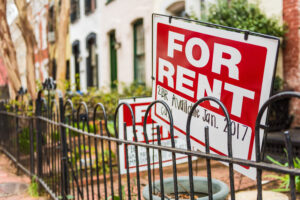This post was written by Dana Dunford, CEO at Hemlane
There are two ways to maximize your return with your investment property:
- During property acquisition – getting a good deal on the value and potential of the investment property
- Through management operations – maximizing your net operating income during the day-to-day activities
Most real estate investors and landlords will have a pro forma on the property acquisition. But, increasing cash flow through operations is an easier and immediate solution that you can begin today with your existing rental properties.
Here are the top 10 ways to maximize your ROI with your rental property:
#1 Advertise Early
When a rental is coming up for renewal, most landlords and managers will wait for the property to be in “move in” condition before starting the advertising process. This is a huge mistake. The most qualified tenants are planners, where they are looking for a new home roughly 15 to 30 days before the move in date. It should not take a landlord more than 5 days to turn over a property, unless there are significant renovations. Therefore, a landlord should market the property early, even if it requires cleaning or repairs after a property showing. The landlord or showing agent can always remind prospective applicants what will be fixed before the move in date.
Should I market the rental property while the current tenants are still living there?
During the turnover of a rental property, it is recommended to perform a pre move-out inspection. This process helps management understand the timeframe for the turnover. More importantly, it signals whether the property can be marketed with the current tenants living in the residence. In some fortunate situations, landlords are able to reduce their vacancy to nearly zero by showing the rental property before the actual turnover. It should be noted that each situation is different. From the current state of cleanliness to the existing tenants’ schedule, management should evaluate whether to show an occupied property on a case-by-case basis.
#2 Advertise Vacancies Professionally
Your excuse for vacancy should never be that you did not advertise your rental property well enough. The majority of searches begin on the worldwide web, and there are a couple of players with the majority of rental search traffic. While Craigslist is still a dominant player, some more qualified tenants refuse to use Craigslist due to the repeated listings and number of scammers. Your goal should be to list your rental on at least the top 10 “heavy traffic” rental listing websites.
#3 Watch Rental Pricing
A property should never be on the market for over 30 days. And, landlords typically believe their rental property is worth more than comparable rentals; after all, the landlord selected this property over other investment opportunities. If the property is not getting multiple leads within the first 30 days, then it is priced too high. Within the first week, a landlord should evaluate interest to determine whether the price is competitive. Vacancy can be emotionally and financially stressful for a landlord or manager. It can lead to a distressed lease negotiation or a lease signing with an unqualified tenant. The best way to have success is adjust your pricing based on the market. You will reduce your vacancy rate,which increases your overall cash flow. $1,500 in lost rent from a month of vacancy is greater than a $100 additional rent for a 12 month lease.
#4 Screen Every Tenant
An overly nice tenant during the property showings may be a professional tenant, who attempts to charm you into selecting them as a tenant. Do not be fooled. The most costly expense is a bad tenant. Every applicant should be screened through a tool like Apply Connect to confirm the financial credibility of the tenant. There are some other steps in the process that can be taken to mitigate the risk further. These include income verification (calling the employer) and prior residence verification (calling past landlords).
#5 Reduce Management Responsibilities
Larger landlords, primarily the REITS, compete on amenities, such as gyms and front doormen. If you are a smaller operation, then you should not follow the strategy of offering free perks with your rental properties. When you offer free wireless internet or other services, your tenant will call you at 3AM in the morning to fix any problems. It is much better to put this responsibility on the tenant. They can call the service provider and handle the situation independently. You want to avoid becoming the middleman in situations that are not related to the actual asset.
Also, during the leasing process, tenants assume they are responsible for additional services. If you include the utilities in your rental listing price, then you do not have an apples-to-apples comparison with other rental listings on the market.
#6 Automate Administrative Tasks
Do not underestimate the amount of administrative work that goes into owning and managing rental properties. From responding to leads during leasing to following tenants on rent collection, it can consume a lot of your time. The most successful landlords know the value of their time and use systems to streamline their process. Not to mention, the best way to keep prospective tenants and current residents happy is to provide quick and informative responses. The best way to automate this is to use intelligent software that can perform the legwork for you.
#7 Inspect Annually
If a tenant refuses to let you enter the residence for an annual inspection, then it is a bad sign. When owning an asset, landlords should make an annual visit to check the condition of the rental. These recurring inspections help prevent larger repairs (e.g. not changing the AC filter can cause serious problems down the road) and record that the residence is well maintained without safety concerns. Inspections reduce your turnover time and portray a more professional business to tenants.
#8 Late Fees Before Rent
A rental agreement is a legally binding contract. The majority of contracts will include a late fee, based on the State’s laws. The purpose of the late fee is to make sure tenants are incentivized to pay on the due date. And typically, there is some grace period between the due date and the late fee.
When a tenant does not pay rent on time and is past the late fee date, you want to follow the agreement agreed to by both parties. A tenant may try to persuade an exception on the late fee, but it is very important to set a precedent that all terms in the legal contract are followed. Otherwise, you may have a tenant try to bend the rules on other lease terms, such as subletting or the pet policy.
With a system that requires late fees before rent, the tenant realizes that you will not waive the fee. Having such a process in place will do two things, it (1) provides additional compensation for late rent and (2) confirms the terms in the contract are being followed.
#9 Decrease Turnover Costs
During the turnover, repair and cleaning coordination can be a lot of work. While certain turnover costs can be deducted from the security deposit, it is better to minimize these costs altogether. The condition of the rental should be the same on the day of move in and move out (the exception being normal wear and tear.) Remind tenants on the expected move out condition and recommend tenants hire a professional cleaner to avoid confusion on what is considered move in ready.
Another tip to reduce turnover costs is to maintain the property during tenancy. For example, if a door is not closing properly, then it should be fixed immediately rather than waiting for the turnover. Vacancy can really hurt your bottom line, and you want the property to be move in ready as soon as possible.
#10 Adjust Renewal Dates
A winter turnover can really hurt your ROI. While the popular move dates vary between neighborhoods, counties, and states, the best rental turnover is typically in the summer when the highest number of tenants are searching. If your property is vacant at an inopportune time (e.g. dead middle of winter), then you want to adjust the renewal date (length of lease). It may require you to negotiate a longer or shorter term lease from the standard 12 month rule. In the end, it will help maximize the number of tenants and rental price you can get for your property.
——————–
Increasing your net operating income is imperative to get results. Landlords and managers who do not maintain the condition of their rentals lose out in the end. They get lower quality tenants and have a more difficult time with tenants abiding by the lease terms. It is important to set up your rental business professionally. Whether you have one or 100 rentals, the operations should strive for collecting rent on time (and if not, requiring late fees) and maintaining the asset to keep good quality tenants.
Author Bio: Dana Dunford is the CEO of Hemlane, a technology-enabled property management platform. She follows rental trends and technology, in order to provide landlords and real estate investors with the most seamless and affordable residential management solutions. To learn more about Dana or Hemlane, visit www.hemlane.com







